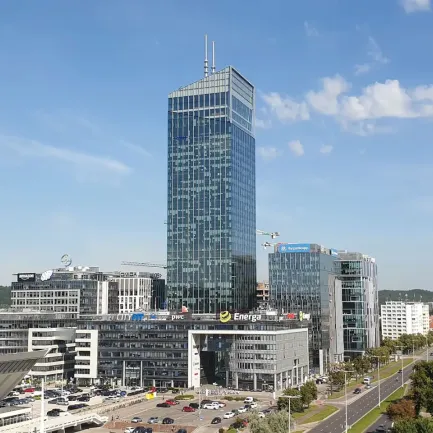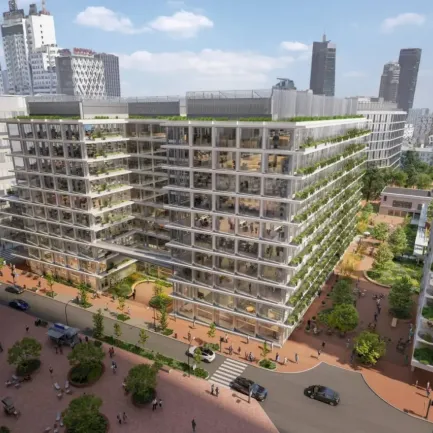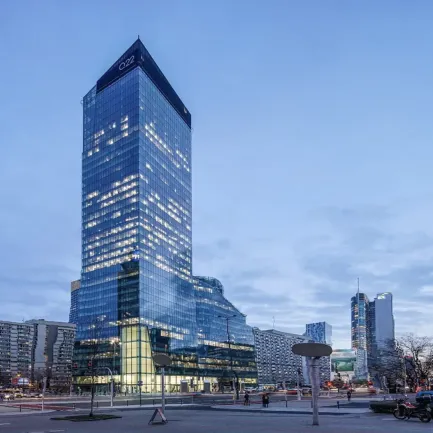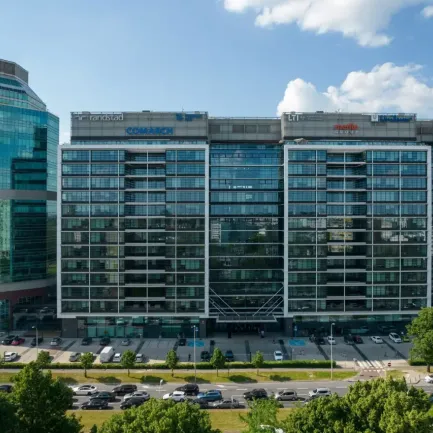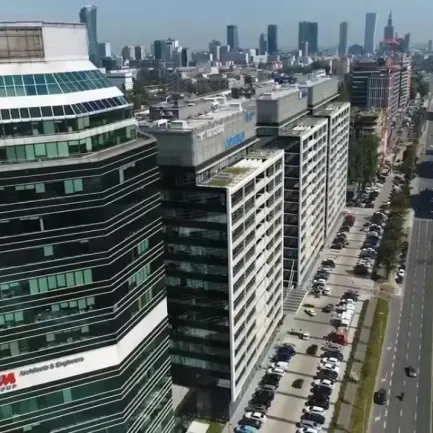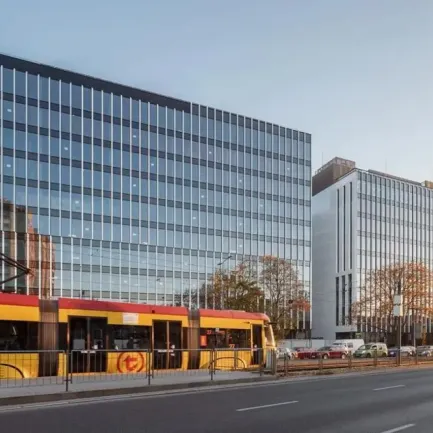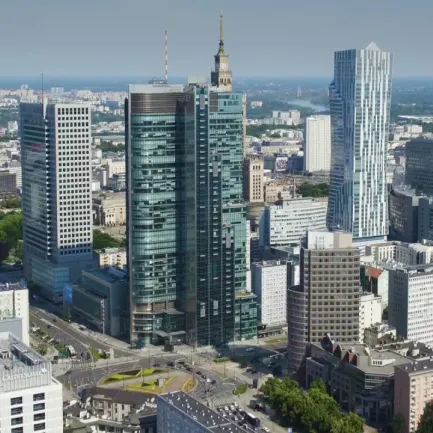Poland’s office market continues to evolve, adapting to changing economic and social conditions. Despite a challenging 2024, it demonstrated significant resilience and adaptability.
In 2024, the total office stock of Poland’s nine key office markets: Warsaw, Kraków, Wrocław, Tricity, Poznań, Łódź, Katowice, Szczecin, and Lublin surpassed 13 million sqm. Regional cities, however, outpaced Warsaw by over half a million square metres (6.8 million sqm vs. 6.3 million sqm).
Leasing activity has consistently exceeded 1.4 million sqm per annum since 2017, except during 2020-2021. 2024’s total take-up is expected to climb to approximately 1.45 million sqm, with around 700,000 sqm transacted in regional cities, marking the second-highest result for the regional markets after the peak year of 2023. Renewals have seen their share of the leasing volume rise steadily over the years and are likely to account for half of deals in 2024. Additionally, with tenants increasingly opting for office space optimisation, the average office lease size has shrunk in recent years.
In 2024, the overall vacancy rate for Poland’s key office markets stood at 14%, equating to 1.84 million sqm of unoccupied office space, with nearly 1.17 million sqm located in regional cities. Looking ahead into 2025, the office vacancy rate is expected to continue its downward trend due to subdued development activity and stable occupier demand - both in Warsaw and regional cities.
Development activity has remained sluggish across Poland’s largest office markets over the past year, falling to below 200,000 sqm in key regional cities. Low supply levels are expected to persist into 2025. Although developers are preparing new office projects in regional cities, they are delaying launches until existing office space is absorbed by the market. By contrast, in Warsaw, the start of new office developments in non-central locations depends on pre-lets being signed with tenants, while the limited availability of attractive land remains a significant challenge for developers in the city centre.
Construction activity is unlikely to pick up significantly to boost new supply levels until late 2025 in Warsaw and 2026 in regional cities. In 2025, total new supply across Poland is expected to remain below 300,000 sqm, reaching an all-time low in regional markets.
ESG standards are gaining importance across the office sector, with tenants and investors increasingly considering the impact of buildings on the environment, local communities and governance transparency. Developers are incorporating ESG considerations into new project designs and the refurbishment of existing stock. New trends in office building design are driving investment in environmentally friendly technologies, including smart energy management systems and renewable energy sources. Solutions that promote employee health and wellbeing - like improved air ventilation, access to natural daylight or communal spaces encouraging physical activity - are also gaining traction. Buildings lacking such features are already struggling to attract tenants and investors. Consequently, looking ahead, we will likely witness more office buildings upgraded to meet new ESG standards and further innovations in sustainable construction.
Authors:
Karol Wyka, Executive Board Director, Head of Office Department, Newmark Polska
Agnieszka Giermakowska, Research & Advisory Director, ESG Lead, Newmark Polska





